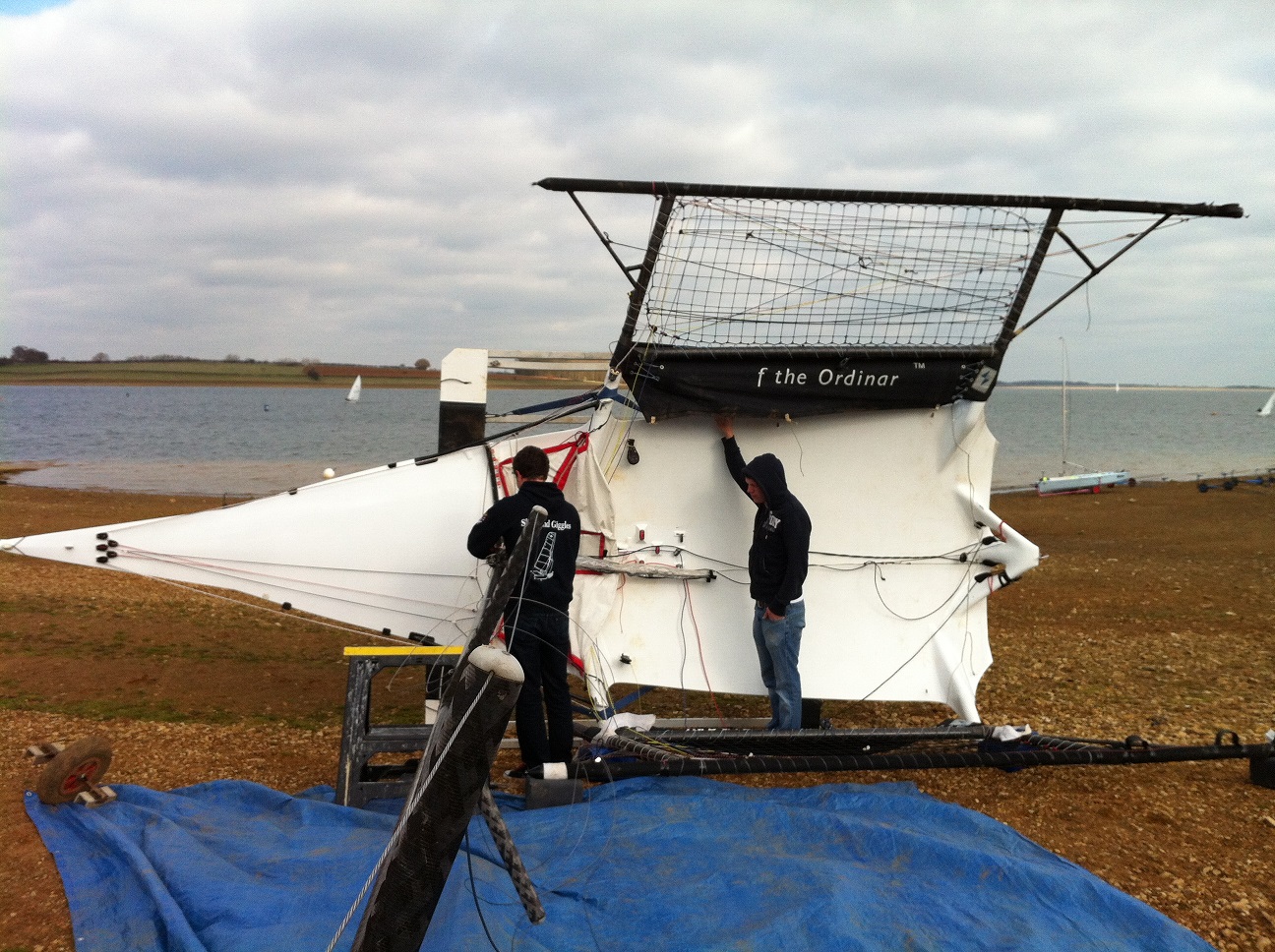Rigs
The boats have two rigs. A larger number 1 rig that is sailed up to around 15 knots and a smaller number 2 rig that’s is sailed in anything above 15knots. It’s the crew’s choice to choose which rig on the day, which can make for some interesting pre race decisions!
Rigging
Many people that may have seen an 18 packed up on a trailer could think it looks a long way from being sailable and that it could take most of the day to rig. However, the boat is very basic to put together and can be from trailer to water within an hour. The boats are rigged on their sides and the sail goes on from the top of the mast.

Sailing Techniques
A couple of documents have been produced to help new sailors get to grips with these boats. These are very much up to interpretation and can be ammended to suit each crew.
Trailing weight
Fully loaded trailers vary, but most are around 700-750kg.

Launching
The boats are lifted from the cradles they're stored in and carried to the water by the crew of 3. The all up weight of the No 1 rigged skiff is around 175kg. The first lift can always be daunting, but many crews have been surprised at how light the skiffs can feel.
Running costs
The layout of blocks and rope on an 18 mean there’s very little to keep maintained. Most hardware are specified to higher strengths than other dinghies, but with another person to share the costs with, the running costs are comparable to other twin wire skiff classes.
Insurance costs
Insuring 18s can vary over time. As a guide, third party insurance can be got for less than £200 and fully comprehensive can be around £400.
